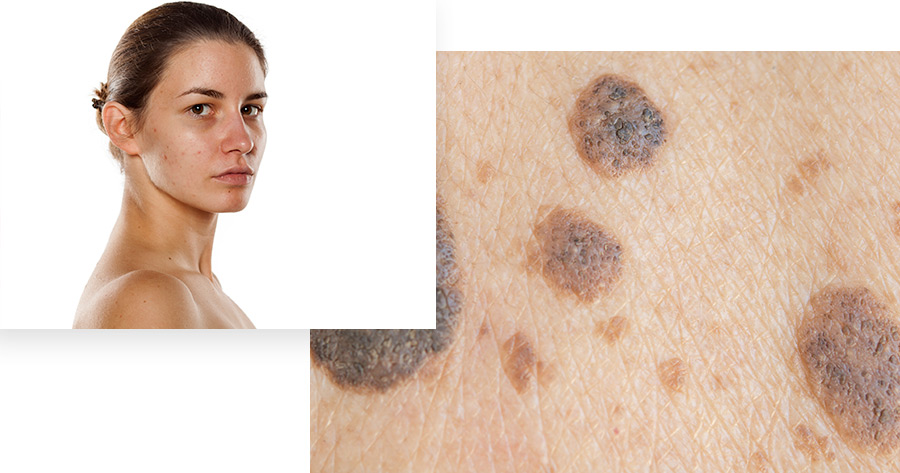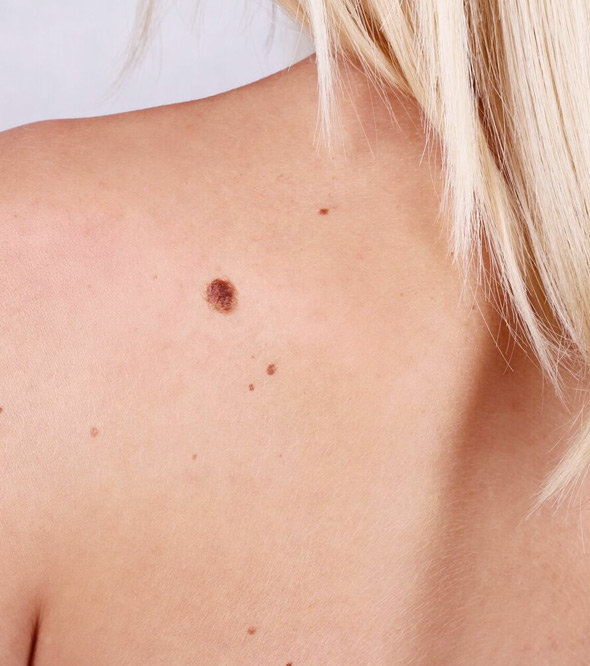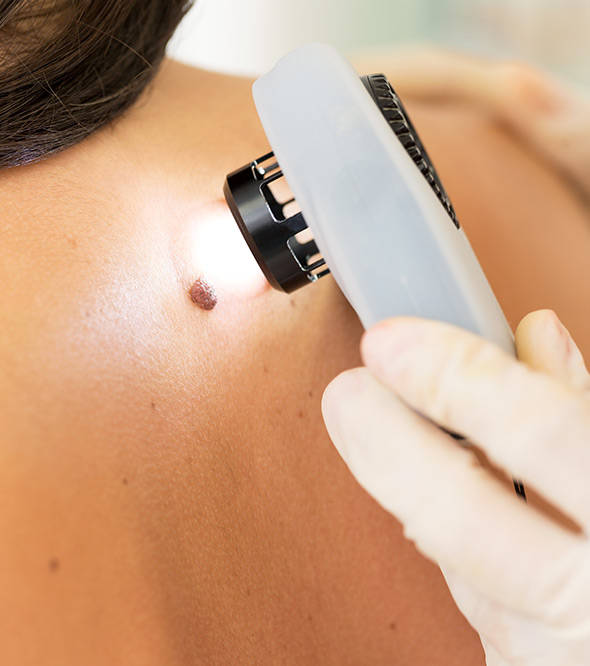Treatment for Irregular Brown Spots
Each year, many of our patients turn to our experienced dermatologists seeking guidance about new or changing irregular brown spots on their skin.
While brown spots are nearly always harmless, patients often wish to minimize their appearance or remove them altogether.
At our practices, we understand the importance of optimal skin health and are here to help you achieve an appearance that aligns with your esthetic goals.
Continue reading to learn more about brown spots on the skin, including the causes and treatment options below.
What Are Brown Spots on the Skin?
Dark spots on the skin, often called age spots or liver spots, are areas of hyperpigmentation that appear darker than the surrounding skin.
These spots are typically flat and can vary in size, ranging from small freckle-like marks to larger patches. While these spots generally don’t pose a medical concern, they can be of cosmetic significance to some individuals.
While brown spots are not harmful, monitoring changes in size, color, shape, or texture is essential.


What Causes Irregular Dark Spots on the Skin?
Brown skin spots appear when melanocytes (the pigment cells located within the epidermis) overproduce melanin, which provides our skin, eyes, and hair with color.
They often appear on areas of the body frequently exposed to the sun, such as the face, hands, chest, and neck.
The main factors contributing to the development of brown spots include:
- Sun exposure
- Aging
- Hormonal fluctuations, such as those experienced during pregnancy, menopause, or while taking birth control, can stimulate melanin production and contribute to the appearance of brown spots.
- Genetic predisposition can affect how prone an individual is to developing brown spots.
- Skin inflammation, injuries, and certain skin conditions can trigger excess melanin production, forming brown spots in affected areas.
- Health conditions like melasma and lentigines can cause brown spots to develop, often requiring medical attention.
If you are bothered by brown spots or concerned about an irregular spot that has changed appearance recently, you should make an appointment at one of our Long Island, Manhattan, Westchester, or New Jersey locations.
Our doctor will examine your skin and review your medical history to determine the cause of your irregular brown spots. If your doctor is concerned that a brown spot may indicate the beginning stages of skin cancer, we will biopsy the area and send it to a laboratory for further examination.
Treatment Options To Remove Dark Spots on the Skin
The treatment to remove dark spots on the skin depends on the underlying cause and the specific type of dark spots.
Here are some common treatments to address dark spots:
Topical Treatments
- Hydroquinone is a common skin-lightening agent that can help fade dark spots over time. It works by inhibiting melanin production.
- Prescription retinoids like tretinoin can help exfoliate the skin and promote the growth of new, evenly pigmented skin cells.
- Topical vitamin C serums can help brighten the skin and reduce the appearance of dark spots.
- Like hydroquinone, kojic acid can inhibit melanin production and lighten dark spots.
Chemical Peels
Chemical peels involve applying a chemical solution to the skin to exfoliate the outer layer. This can help reduce the appearance of dark spots and promote the growth of new skin cells.
Laser Therapy
Lasers can target and break down pigmented cells in the skin, reducing the appearance of dark spots. Different types of lasers, such as fractional or intense pulsed light (IPL), may be used depending on the specific condition.
Cryotherapy
Cryotherapy involves freezing the dark spots with liquid nitrogen, causing the spots to peel off as the skin heals.
Prescription Medications
For specific conditions like melasma, your dermatologist might prescribe medications like topical corticosteroids or combination creams to help lighten dark spots.
It’s important to note that the effectiveness of treatments can vary based on factors like the type of dark spots, their severity, and an individual’s skin type. Consulting a dermatologist is crucial to determine your condition’s most appropriate treatment.
How to Reduce Your Risk of Developing Brown Spots on the Skin
Preventing dark spots on the skin involves a combination of protective measures, lifestyle choices, and skincare practices.
While complete prevention might not be possible in all cases, especially if genetics are involved, you can reduce your risk of developing dark spots on the skin by:
- Applying sunscreen with broad-spectrum protection (against UVA and UVB rays) and high SPF daily, even on cloudy days.
- Wearing protective clothing, such as wide-brimmed hats, sunglasses, and long sleeves, to shield your skin from direct sun exposure.
- Limiting your time in direct sunlight, particularly in a high-altitude or reflective surface environment.
- Avoiding tanning beds.
- Maintaining a healthy diet rich in antioxidants, vitamins, and minerals to support overall skin health.
- Staying hydrated by drinking plenty of water.
- Using a gentle cleanser and avoid harsh scrubbing or abrasive skincare products that might irritate the skin.
- Incorporating exfoliation into your routine to remove dead skin cells and promote even skin tone.
- Scheduling regular visits with a dermatologist to monitor your skin’s health and address

Remember that prevention is vital, especially since exposure to sunlight is a significant factor in developing dark spots.
Adopting these preventive measures and incorporating sun protection into your daily routine can significantly reduce the risk of developing new dark spots and maintain healthier, more even-toned skin.
